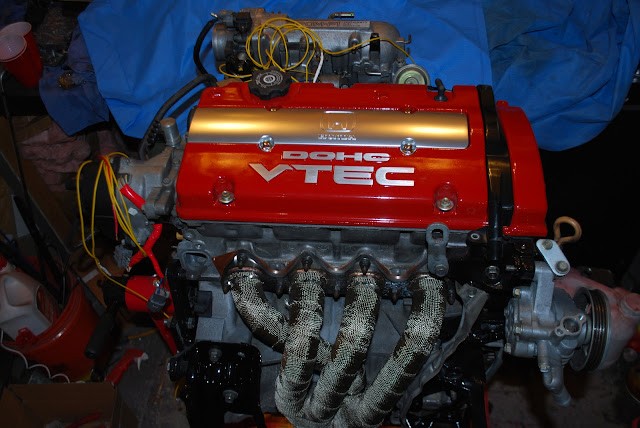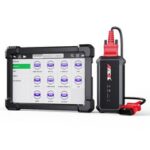So, you’re in the market for an H22A engine, maybe for a Honda Prelude, Accord, or another project car. You’ve likely come across the OBD1 vs. OBD2 debate, and perhaps you’ve stumbled upon an H22a Obd2 For Sale. While the OBD1 H22A is often favored for its perceived simplicity in swaps, don’t immediately dismiss the OBD2 variant. This guide will walk you through the key differences and show you how an OBD2 H22A can be a viable and cost-effective option for your engine swap.
Many enthusiasts automatically lean towards the OBD1 H22A, thinking it’s the easier route, especially when retrofitting into older, OBD1-equipped cars. However, sourcing a good condition OBD1 engine can sometimes be challenging and pricier. OBD2 H22As, often found in later model JDM imports, can be more readily available and sometimes at a better price point – making “h22a obd2 for sale” a potentially attractive search term.
But what are the real differences? Let’s break down the key areas where the OBD2 H22A diverges from its OBD1 predecessor, and how to navigate these differences during your swap.
Key Differences Between OBD1 and OBD2 H22A Engines
The core engine block and performance characteristics of the H22A largely remain consistent between OBD1 and OBD2 versions. The main distinctions lie in the engine management and sensor systems. Here are the primary points to consider:
1. MAP Sensor Location
OBD2 H22As typically feature a Manifold Absolute Pressure (MAP) sensor mounted directly on the throttle body. OBD1 versions usually have the MAP sensor located elsewhere, often on the firewall or intake manifold with a vacuum hose connection. While you could technically use an OBD1 style MAP sensor, utilizing the OBD2 throttle body mounted sensor is often a cleaner and potentially more accurate setup. Adapting the wiring is straightforward; diagrams are readily available online to guide you through splicing the wires to match your existing harness.
2. Distributor (Dizzy) Connections
The distributor, or “dizzy,” is another area of difference. OBD1 distributors typically have two separate plugs, while OBD2 distributors use a single, consolidated plug. Internally, the components are largely the same. The key difference is the wiring connector. The good news is that the wiring within both distributors is similarly configured, often even using the same wire colors. This means you can rewire the OBD2 distributor plug to match the OBD1 wiring harness. Alternatively, you can swap the internal components of an OBD1 distributor into the OBD2 housing if preferred.
3. Fuel Injector Impedance
OBD1 H22A engines use low impedance (saturated) injectors, while OBD2 versions utilize high impedance (peak and hold) injectors. This is a crucial difference because the ECU and the car’s wiring are configured for a specific injector type. OBD1 cars use a resistor box to lower the voltage for low impedance injectors. If you’re using an OBD1 ECU (like a P13) with OBD2 injectors, you’ll need to bypass the resistor box by connecting the wires that previously went into the box directly together. This allows the high impedance injectors to function correctly with the OBD1 ECU’s signal.
It’s worth noting that OBD2 injectors are typically slightly smaller in capacity (around 290cc) compared to OBD1 injectors (around 345cc). For most stock or mildly modified applications, this difference is often negligible, especially if you are using a programmable ECU like Hondata, which allows for fuel adjustments.
4. VTEC Oil Pressure Switch
Some OBD2 JDM H22A engines may not include a VTEC oil pressure switch. This switch is a safety measure that ensures adequate oil pressure before engaging VTEC. If your OBD2 engine lacks this switch, you can easily add one by sourcing a switch and installing it, typically near the VTEC solenoid.
Making the OBD2 H22A Work for You
While these differences might seem daunting at first, adapting an OBD2 H22A for an OBD1 car is a well-trodden path. Many enthusiasts have successfully completed this swap, often finding it a more budget-friendly option when searching for “h22a obd2 for sale.”
The common approach is to retain most of the OBD2 sensors and components, simplifying the adaptation process. Using an OBD1 ECU, such as a P13 (Prelude VTEC ECU), is a popular choice for controlling the OBD2 engine in an OBD1 car. For advanced tuning and customization, a chipped P28 ECU with Hondata or similar engine management systems provides excellent flexibility.
In summary, if you find a good deal on an “h22a obd2 for sale,” don’t let the OBD2 designation deter you. With a little wiring adaptation and understanding of the key differences, you can successfully and reliably install an OBD2 H22A into your project car, enjoying the power and performance of this legendary Honda engine.

